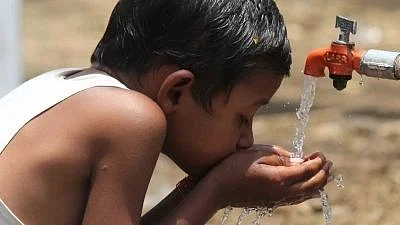Access to drinking water, an issue of public health, remains one of India’s biggest challenges. Over 600 million Indians face acute water shortages and 70% of the nation’s water supply is contaminated.
It doesn’t stop there; 21 cities in the country could soon run out of groundwater and 21% of India’s diseases are water-related, resulting in the death of over 100,000 children every year. Consumption of contaminated water impairs health baselines and makes poverty multi-generational.
India constitutes 16% of the world’s population but possesses only 4% of its freshwater resources.
A growing population, rapid urbanization, and the growing demand for water from agriculture, energy, and industry is exacerbating the problem, even resulting in social conflicts and ‘water wars’. The forecast is not too bright: India will lose 6% of GDP by 2050 due to poor water management, as per World Bank data
The government has recognized the challenges of providing access to clean water. The implementation of the Swachh Bharat Mission brought to the fore the need to solve for water to achieve sanitation goals. Thus, came the Jal Jeevan Mission (JJM) in 2020, which seeks to provide piped drinking water to every household in the country by 2024. The JJM focuses on leveraging global technologies in the field of water.
In fact, a 2020 pilot run by Tata Trusts used IOT (Internet of Things) sensors to identify issues related to groundwater depletion. This brought focus to watershed management, addressing distribution issues such as leakages, low pressure, and outages, and led to addressing the problems while bringing down costs.
The scope to introduce cutting-edge technologies in the water sector is immense. The Union Budget allocation for JJM grew nearly 4.5x between FY 2021 and FY 2022. But technology deployment requires more than public funding; it needs private participation and innovation to solve problems on the ground.
Technology and innovation will play a critical role in addressing scarcity and safety, access, water efficiency, utility operations, monitoring and treatment and data and analytics.
Adopting promising technologies such as the remote sensing of water can help with water accounting, non-revenue water remediation, smart irrigation, water quality control, and can help develop sustainable water management models.
Use of sensors has addressed issues in water distribution that monitor water distribution and flag thefts, leakages, blockages, and outages. They help smart meters that share real-time usage information to monitor and stop wasteful behavior.
Artificial intelligence (AI) can be used to convert sensor data into actionable insights that will help decision makers. This includes alerts about leaks, water quality, pollution, when repairs are needed, and predicts groundwater levels.
While the public and private sectors joining hands to solve water issues for social, economical and environmental impact is the foundation to a world where all have access to clean water as a basic human right, it is entrepreneurial energy which can provide truly disruptive solutions.
We need committed entrepreneurs, with speed and scale as their DNA, to bring their capacity for ground-breaking innovation and problem-solving into water challenges.
For example, organizations like FFEM (Foundation For Environmental Monitoring) have developed cutting edge technology to detect contaminants by using smartphones and have democratized water testing.
The test is conducted in the field itself and has no need for samples to be carried to specialized labs in a big city. This helps communities to monitor their drinking clean water, via a simple test, at a fraction of the cost.
Similarly, AquaSafi, which has brought the cost of purifying water to less than two paisa a liter and has set up water ATMs at community centers and panchayat offices, making the last mile problem go away for a lot of dispersed, scattered communities across the country.
They're most active in the Dharwad region of Karnataka.
To encourage such innovation and partnerships, incubators and impact investors have been nudging talent, capital, and public attention towards smart water solutions. Programs like the Atal Innovation Mission’s Water Challenge aim to complement the efforts of Jal Jeevan Mission and encourage entrepreneurs to solve water security problems while ensuring large-scale impact.
They aim to support solutions that address population-scale water challenges-specifically, source water purification; smart distribution and storage provisions ensuring sustained clean drinking water availability and accessibility; and recycling solutions like water source recharge, desalination, wastewater treatment to increase availability of drinking water in regions with water scarcity.
Collaboration is key to deploying technology in the water sector; without equal participation of the ‘Sarkar, samaj, and bazaar’ (government, people, and the market), tech transformation of the water sector will be tough.
And without innovative interventions, the risks from a lack of water security will pose insurmountable challenges in achieving the country’s developmental goals.
(Sudha Srinivasan is the CEO of The/Nudge Center for Social Innovation, driving The/Nudge Prize | Ashirvad Water Challenge for startups- ‘Clean drinking water for all’, in Partnership with Principal Scientific Adviser, GoI)
